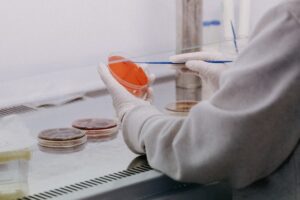
Before we were even able to get accustomed to the new COVID variant that has hit the UK, another one is cooking in South Africa, but in order to understand how they worked to control the UK variant, let’s take a look at what they did before we tackle a discussion on the South African one.
It was just before Christmas 2020 when we heard of this new strain. What was done about it?
- The U.K. imposed fresh and more severe lockdowns across London
- Several countries worldwide placed a travel ban on the U.K. to curtail the new variant’s spread.
- Tier-four restrictions were placed for Christmas in Scotland, Wales, and England.
What is this new variant all about? How did it come to becoming the most common form of the virus in the U.K.? Is it more contagious? Is it more dangerous? Will the vaccine work against this new COVID-19 strain? Let’s explore the answers. But before we get started, let’s first look into why this new strain is a cause of concern for people worldwide.
The New COVID-19 Strain and the Concerns

Genetic changes are a natural phenomenon that occurs every time a genetic material is copied. When any virus replicates inside the infected cells, the new copies are genetically different from the parent virus. The same is the case with the COVID-19 virus. But why is the new variant a cause of concern for people in the U.K. and around the world?
As the COVID-19 virus continued to modify genetically, a particularly interesting mutation was the one that altered the spike protein. It affects how the virus penetrates inside the cells and causes infections. The new variant, known as the VUI-202012/01 (the first Variant Under Investigation in December 2020), has 17 mutations, which are a lot of changes in any specific microorganism.
These changes have increased the transmission of the virus and the new strain is around 70% more transmissible than the previous one. The increased hospitalization in an already overworked healthcare sector is a concern, not only in the U.K. but throughout the world.
Is the New Variant Causing More Severe Infections?
As of now, no evidence suggests the increased severity of infections. However, the effects are still under consideration. While there is still no evidence that the new variant can cause more severe illnesses, the high transmissibility is still a concern. Since it can infect anyone quickly, a high-risk person with preexisting medical conditions such as diabetes is more likely to end up in the hospital. So the new COVID-19 strain is a concern for the old and vulnerable high-risk category for COVID-19 as it could lead to an increasing number of people needing hospital treatment.
Will the Vaccine Still be Effective Against the New Strain?
As of now, there is no evidence that the current vaccine used in the U.K. against the COVID-19 virus will not be effective against the new strain. So, it is reasonable to assume that, at least for now, the vaccine will still be effective against the new COVID-19 strain.
All three leading vaccine manufacturers have worked on an mRNA vaccine that trains the immune system to attack several different parts of the virus. Even if the spike has mutated, the vaccine can still be useful. However, if the virus’s genetic coding continues to change at the same speed and we see a lot more mutations, then maybe it will be a concern. In that case, vaccine manufacturers and governments worldwide will have to work together to tweak the vaccines, just like the flu vaccine, to make them more effective against the ever-mutating virus. Fortunately, modifying an existing vaccine is a lot easier than creating a new one.
How Far Has the New COVID-19 Strain Spread?

The U.K. government has taken timely and strict measures to control the spread of the new strain. It is believed that it either emerged in the U.K. or has been imported from another country with a lower ability to observe and track coronavirus mutations. It is also thought that the highly mutated form of the virus bred somewhere inside the body of an infected patient with a compromised immune system. The patient’s immune system couldn’t fight the infection; instead served as a breeding ground for endless additional mutations.
The new COVID-19 variant that was found in the U.K. is heavily concentrated in London, the South East, and eastern England. The number of infections elsewhere in the country is still relatively stable. Data from Nextstrain suggests that some cases in Denmark and Australia have been reported as well, which came from the U.K. A few cases were also reported in the Netherlands.
Is it Normal for Viruses to Mutate?
As mentioned earlier, virus mutations are completely natural and are due to the same mutation that the flu vaccine needs to modify every year.
If you look at the COVID-19 virus, it changed its forms several times and is no longer the same that was initially detected in Wuhan, China. The initial virus mutated and then the D614G version began to materialize in Europe, which eventually spread around the world. Moreover, another mutation called the A222V also spread in Europe. And today, we have the new COVID-19 strain that was first detected in England.
Scientists and researchers around the world cannot predict how many more mutations the world will experience for COVID-19.
New COVID-19 Strain Protocols
We know that the new COVID-19 strain is far more contagious than the initial COVID strain and is the driving force behind the rapid upheaval in infections across London and other parts of the U.K. However, there is still limited evidence that this new strain can cause more severe infections and stronger symptoms. Timely efforts by the concerned authorities may only prove effective if people stick to the rules to prevent infections.
Even with the new variant and all the concern it is causing, the best way to prevent infections is to keep washing your hands, wear a face mask, maintain a distance of 6 feet from others and limit your number of physical contacts.
Additionally, even though the infections are still increasing, the number of deaths are not increasing respectively. That is a good sign and signals that our front-line scientists are really getting a better hold on this disease.
